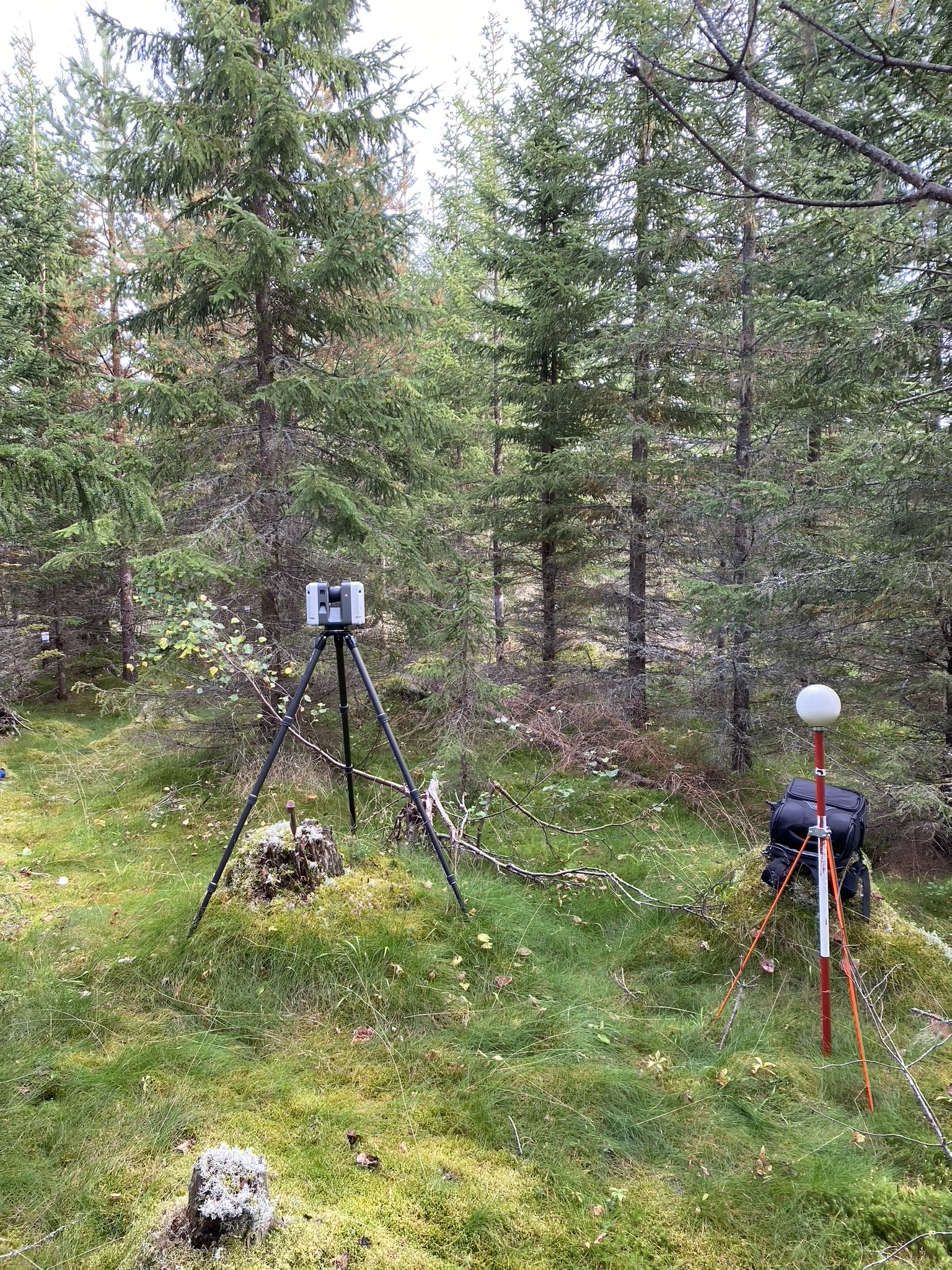NEWS ARTICLES / OCTOBER 2025
Improved understanding of forest structure with terrestrial LiDAR
Wed 15 October 2025, NGC Communication Team

NEW NEXTGENCARBON PUBLICATION The newly published
study has looked at the ways terrestrial laser scanning is able to diversify our
understanding of forest structure and ecosystem dynamics. This includes new insights
into forest disturbances and improved structural assessments in forest and
carbon inventories.
The second scientific paper
from NextGenCarbon was published in Nature Communications on 6 October. "Expanding
forest research with terrestrial LiDAR technology" discusses how terrestrial
LiDAR has improved our understanding of forest structure. NGC colleagues
The article discusses recent advancements in terrestrial laser scanning (TLS), also known as LiDAR (Light Detection and Ranging), and its applications in forest science. Furthermore, it explains how the increasing computational power and rise of artificial intelligence are enabling researchers to address more complex issues.
TLS allows to measure 3D attributes like branch lengths and angles, that have been impractical to measure at scale with traditional methods like measurement tapes.
Benjamin Brede contributed to the review with an overview about the use and possibilities of TLS in forest inventories. TLS plays a vital role in NextGenCarbon WP2 for the structural characterisation and detection of structural change at ICOS sites. An ICOS site is a research station within the Integrated Carbon Observation System (ICOS), a European research network for monitoring greenhouse gases.
- Basically TLS allows to measure 3D attributes like branch lengths and angles, that have been impractical to measure at scale with traditional methods like measurement tapes. The TLS data acquisition in NextGenCarbon will continue early next year to take advantage of the defoliated trees, so that branch architecture is easier to identify, says Benjamin Brede, describing the next steps in the data collection process.
_____
Read the open access paper from Nature Communications:
Maeda, E.E., Brede, B., Calders, K. et al. Expanding forest research with terrestrial LiDAR technology. Nat Commun 16, 8853 (2025). https://doi.org/10.1038/s41467-025-63946-6
*WP=Work package
